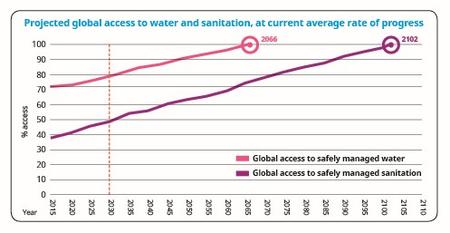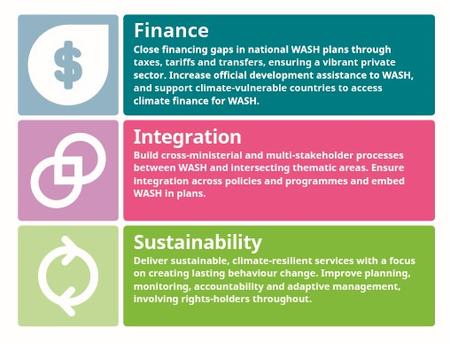Three ways to end the global water, sanitation and hygiene (WASH) crisis and reach Sustainable Development Goal 6

Is it possible to get water, sanitation and hygiene (WASH) to everyone, everywhere within a generation? Yes, but not without urgent government action on three key issues. Ommera Ahmed, Advocacy Coordinator at WaterAid UK, shares highlights from our new brief on how to reach Sustainable Development Goal 6.
Governments are not doing anywhere near enough, anywhere near fast enough, to make clean water, decent sanitation and good hygiene (WASH) normal for everyone, everywhere by 2030.
Despite progress around the world to increase access to these basic needs, 844 million people still don’t have access to clean water and decent toilets. This crisis is a flagrant denial of people’s human rights to water and sanitation. It’s costing lives, and preventing families, communities and countries from reaching their full potential.
UN member governments have committed to ending extreme poverty by 2030, and to that end promised to meet the 17 Sustainable Development Goals (SDGs). Setting Goal 6 – to ensure everyone has sustainably managed safe water and sanitation – was a great start. Now, governments must act urgently if they are to achieve it.
Some are cynical about what the SDGs can realistically achieve; the targets are more ambitious than those of the Millennium Development Goals. But we know that change is possible – government actions can transform lives, communities and countries.
The time is now
This July, the UN will review progress towards Goal 6. The review will show how little progress governments are making, and how slowly.
Now is a critical moment to demand immediate action from governments across the world.
We know what works and what governments need to prioritise to ensure change happens. In our brief ‘How to reach everyone with safe water and sanitation by 2030’ we set out three ways in which governments can act now to ensure water and sanitation – and thereby a healthier, more prosperous future – for all.
1. More (and better) funding
Ensuring that within a generation everyone has clean water and decent toilets and practises good hygiene requires an investment of US$28.4 billion a year. Yet WASH is chronically underfunded in many developing countries. Governments and donors must prioritise effective funding for WASH. And if we are to leave no one behind, finance has to get to the most marginalised groups.
2. Effective integration
Achievement of Goal 6 is essential for the success of many of the other SDGs, including nutrition, education, health, gender, inequality, peace and stability. Governments won’t meet these goals without ensuring everyone’s WASH needs are met. People working in each of these different areas must connect and collaborate, to ensure integration of WASH into plans and programmes of other sectors, and vice versa.
3. Greater sustainability
WASH services must be fit for purpose and built to last. Services should be sufficiently financed and resilient to withstand future environmental variation – including climate change. And it’s crucial to engage communities in developments from the very start, so that their insight can shape their own services.
Act now to make promises count
The pressure is on if we are to transform people’s lives and help communities escape extreme poverty by 2030. But now is the time to move forward from promises. With urgent action on these three areas, governments can make SDG 6, and this overarching goal, reality.
Read our brief to find out more.





